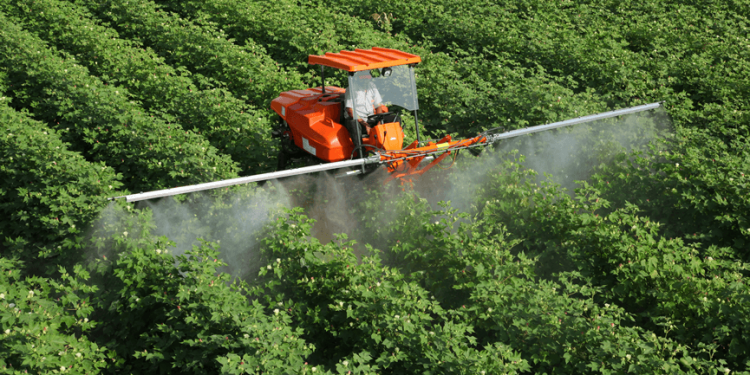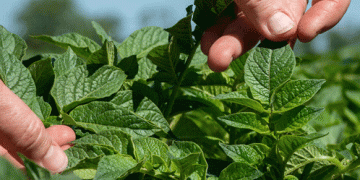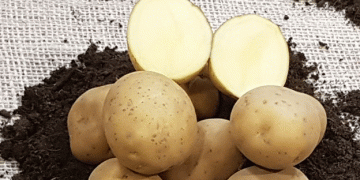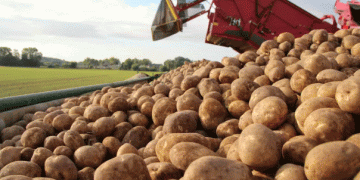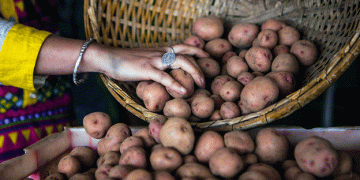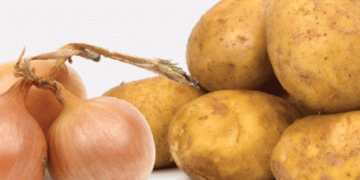Soil and plant additives are considered bearers of hope when mineral fertilizer prices are unaffordable and chemical agents are no longer available. These new bioproducts will be on the market for the first time in 2022. agrarheute says what they should do.
They are no longer a niche product. Biostimulants, neither pesticides nor fertilizers, often improve the supply of plants because they make nutrients in the soil more available to the roots. Or they increase the resistance to stress, for example during drought. Often these are naturally occurring bacteria isolated from the soil. When the roots colonize, they quickly form a dense biofilm, which then acts as a natural barrier.
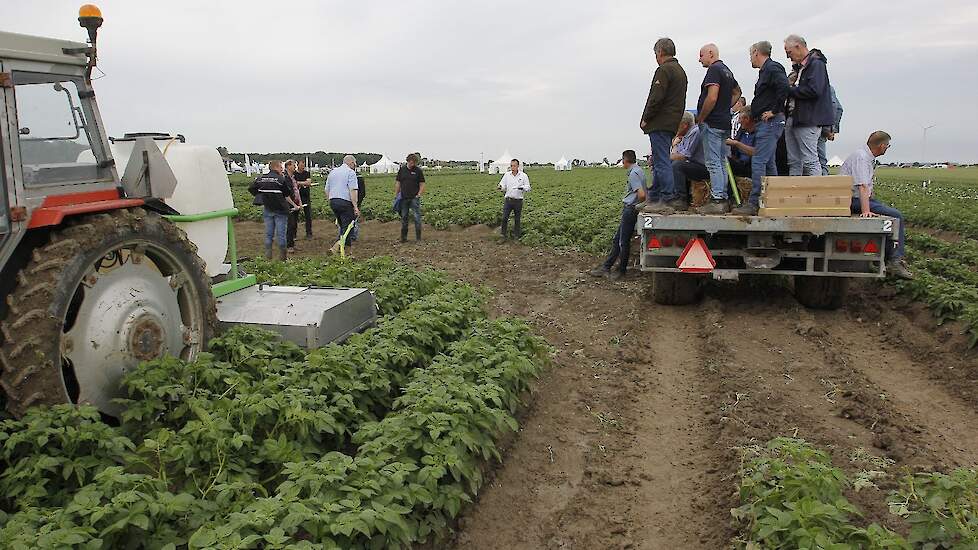
These include microorganisms , for example mycorrhizal fungi, Rhizobium , Azotobacter, Azospirillium species, bacteria or bacilli, further algae or plant extracts, inorganic substances such as trace elements , amino and other acids or humic substances, but also proteins, lignins , Chitins or signal substances. A number of preparations will come onto the German market for the first time next season.
New bio-stimulant products: trace nutrients and Co.
The following agents, which primarily promote early growth and ensure constant stocks in order to secure yields and quality, will be new on the market in 2022.
- Ympact ( Corteva ): The nutrient pickle for all types of grain contains manganese (Mn), zinc (Zn), copper (Cu) and molybdenum (Mo) as well as organic acids. It is approved as a fertilizer (EU 28 01/2020 EC) and improves germination, field emergence and winter hardiness. For seed treatment, an application of 0.7 l / 1,000 kg of seed is recommended.
- Utrisha N ( Corteva ): The bio-approved bacterial preparation contains Methylobacterium symbioticum and improves nitrogen efficiency. The bacteria colonize the leaves, fix atmospheric nitrogen and make it available to the plants in the form of ammonium. They are said to provide up to 25 percent of the nitrogen (N) requirement through the leaf.
The preparation is recommended in maize, grain, rapeseed and potatoes. 333 g / ha are sprayed at more than 10 ° C for rapid colonization, if possible when the stomata leaf openings are open in the early morning hours. No products containing chlorine, surfactants or copper are to be used four days before and seven days after application. - Epivio ( Syngenta ): The brand aims to protect seeds from abiotic stress such as drought, heat, cold and nutrient deficiencies. The products are marketed in combination with other seed treatment products in order to improve the growth of crops and at the same time reduce the effects of pathogens, insects and nematodes that are difficult to control. Micronutrients and bio-stimulants usually activate the microflora of the soil. This creates natural symbioses, which are ultimately intended to increase yields.
- Epivio Energy (Syngenta): The biostimulant for seed treatment contains 30 percent organic matter, three percent total nitrogen and one percent organically bound nitrogen (Norg), three percent water-soluble potassium oxide (K2O), two percent manganese (Mn) and 0.5 percent Molybdenum (Mo).
- Boost & Go ( Lidea ): The brand for seed treatment for maize consists of a combination of four products. The first pickling component is a fungicide that protects the seedling against important pests. This can be combined with a bird repellent or an insecticide. Further components aim at an optimal supply of nutrients with magnesium, manganese, copper and zinc. The third component is a protein-based bio-stimulant. With increased root development, the seedling absorbs the nutrients dissolved in the soil better.
- Pepton 85/16 ( Plantan ) is a tonic in the form of water-soluble microgranules. It supplies the plant with amino acids. This improves their fitness and the quality of the harvest, increases the immune system and strengthens stress tolerance. It also lowers the breakdown of protein and chlorophyll. In grain, 1 to 2 kg / ha, in beets and potatoes 1.5 to 2.5 kg / ha, are recommended as foliar treatment. An anti-foam agent is usually necessary.
Biostimulants: seaweed and more
Brown or marine algae can be found in a number of products. The following products are new to us in 2022:
- Exelgrow ( Adama ): The biostimulant is based on the brown alga Ascophyllum nodosum . The preparation promotes fruit development in apple growing, for example. Further innovative products for arable farming are currently being tested in the field and are planned for use in 2022.
- Nubio ( Nufarm ) is the name of an umbrella brand that brings together biological solutions. It is intended to complement the chemical portfolio. The preparations are often touted as “biological insurance” against all kinds of calamities.
- Sealcit TM ( Nufarm ): The extract from the seaweed Ascophyllum nodosum can be used in rapeseed to prevent the pods from bursting prematurely. The product ensures that less lignin is formed in the rapeseed pods. In this way they do not lignify so much and remain more elastic, the open areas remain less brittle. This creates more flexibility for harvesting.
Apply biostimulant products as a stain or foliar treatment
Many preparations can not only be pickled or mixed with conventional fungicidal dressing agents, such as the Efa stain with the Penicillium strain B300 and the signaling molecule of rhizobia and mycorrhiza B370 ( Bayer ), but can also be sprayed onto the leaves like chemical agents.
- Hamerol ( Plant Power Products ): The water-soluble powder with chitosan hydrochloride, also called chitosan, stimulates the plant’s own defenses. Above all, the root system of the plants develops better with it. In the Netherlands it is used as a fungicide and bactericide in potatoes, beets, wheat, onions and vegetables. Seed potatoes or sugar beet seeds can be dressed with it. Or it is sprayed onto the leaf. According to the manufacturer, it is effective against Rhizoctonia, Alternaria, Boytris, powdery mildew, Fusarium, Cercospora and rust.
- Xilon ( Kwizda ): The biological soil fungicide for maize, soybean and sunflower is formulated as a water-dispersible granulate. As an active ingredient, it contains the Trichoderma asperellum strain , T34 for short, which is registered in accordance with EU regulation 1107/2009. As a soil fungicide for root infections, it contains four mechanisms of action and belongs to a new class of the Fungicide Resistance Action Committee (FRAC). It supports the generation of enzymes, parasitizes pathogens, protects against diseases and strengthens the defenses of plants through better absorption of nutrients.
- However, not all Trichoderma are created equal. The families of this genus and even individual tribes behave very differently in the field. T34 was screened among 300 strains tested in decades of research at a Spanish university. The strain is listed in Annex I and has solid data.
- Quantis ( Syngenta ): The liquid leaf treatment agent in potatoes is based on amino acids and peptides. It supports natural processes in the plant that make it more resistant to stress. It contains two percent amino acids, one percent nitrogen, 16 percent carbon, eight percent K2O, one percent calcium (Ca) and traces of micronutrients.
- Megafol ( Syngenta ): The biostimulant contains vitamins, amino acids, proteins, betaines and growth factors and is said to reduce extreme abiotic stress, which increases with advancing climate change. The agent consists of nine percent carbon (C) of organic origin, three percent total nitrogen (N), one percent organic and two percent carbamide nitrogen and eight percent potassium oxide (K2O). According to the provider, it is water-soluble and “contains less chloride”.
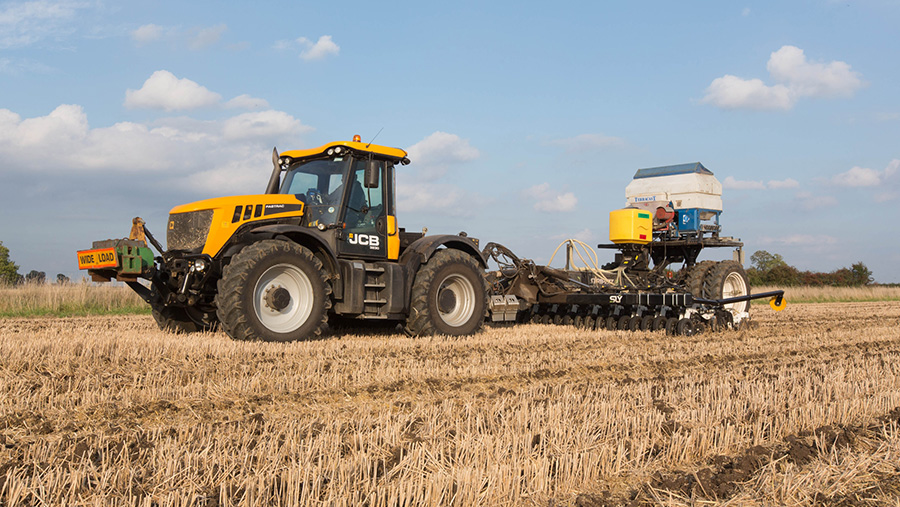
Biostimulants: Neutral test results are mostly still missing
There are few tangible test results available on the expense and income of biologicals. Hessian experiments recently showed that pickled biostimulants, such as certain Bacillus strains, reproduce better with plowing on the roots and could thus have a positive effect. What is good for them does not have to serve mycorrhiza at all.
In classic field tests, statistically verifiable differences between biologicals can only relatively rarely be demonstrated. The influences of the nature of the location and, above all, soil cultivation, crop rotation and weather influences are usually simply too great. Research still has to do a lot of work.
